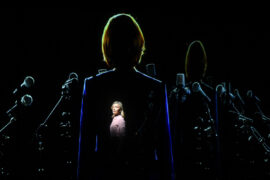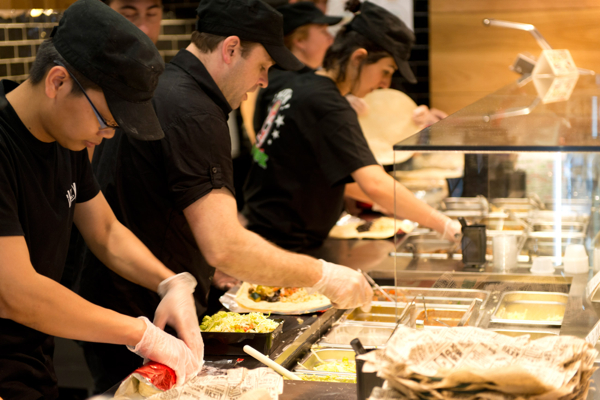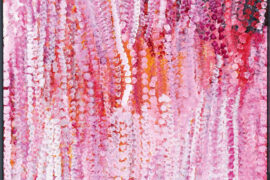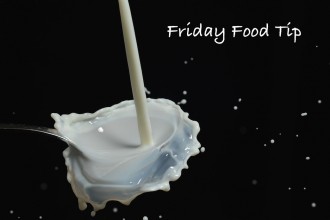Published in Out There magazine, Summer 2004.
Whether it’s soaring over the city in a hot-air balloon, zooming around town on the back of a Harley Davidson, or cycling around Lake Burley Griffin, Canberra is a beautiful and fascinating city from every perspective.
For those who arrive without wheels, there are plenty of options for sightseeing in the National Capital, each offering a surprisingly different view.
There are excellent walking tours incorporating the main public buildings, or you can hire a bike and enjoy some of the more than 300km of bike paths.
Despite its small population of just over 300,000,Canberrais a big city geographically, with lots of parkland and open spaces. Therefore, if you want to explore anything beyond the Parliamentary Triangle – and it is highly recommended that you do – you’ll need more than your own legs.
The local Action bus service will get you almost anywhere in the city and suburbs, or you can take the bright red open-topped double decker tour bus which allows you to hop on and off at the city’s main attractions.
There are specialised tours, too, such as winery tours, tours that go bush and even a Weird Canberra tour taken in a hearse.
And for yet another perspective, take a look at the city from Lake Burley Griffin, named after the man who designed the city. The MV Southern Cross cruises past many of the public buildings, or you can hire a paddle boat, hydro bike or canoe.
If you have your own wheels or hire car, be sure to get a map.Canberrais built around hills and the lake, not laid out in neat squares, so driving around can be – let’s put it this way – fun! If you can see your destination ahead and you’re driving in a straight line, you’re probably going the wrong way. Despite that, the roads are excellent, traffic delays are rare and parking is a breeze.
A good place to start your tour ofCanberrais the National Capital Exhibition at Regatta Point. With commentary in six languages, it explains the city’s past, present and future. Here you’ll find old photographs, a laser-lit model of the city, Walter Burley Griffin’s winning design and drawings by his wife, Marion Mahoney, that accompanied the original plans.
TheFederalCapitalTerritory came into existence onJanuary 1, 1911, a decade after Federation. Sydney and Melbourne both wanted national capital status and in 1908, a diplomatic solution was found by selecting a site in between.
American born King O’Malley, the colourful Minister for Home Affairs, was influential in the choice of site, apparently (and this might come as a surprise) because of the climate. He is quoted as saying, “I want to have a climate where men can hope. We cannot have hope in hot countries.”
In April 1911, the Government launched an international competition for the design of a capital, and Burley Griffin’s came up trumps out of 137 entries. His imaginative design was for a great triangle of avenues and an artificial lake, with mountain ranges forming a scenic backdrop to the city.
While there has been some deviation to the plan, the city remains a tribute to Burley Griffin’s vision, and his design continues to influence planning in the National Capital today.
The National Capital Authority offers free walking tours from Regatta Point, focusing on the city’s design and points of interest. If you want to do your own tour, the National Capital Exhibition has excellent brochures for self-guided walking tours with specific themes.
BurleyGriffin’s plan was for a public assembly building on Capital Hill, the axis of his triangle, and it is fair to say that when Parliament House opened on this site in 1988, it became the focal point of the city.
Fears of terrorism post-September 11, 2001, have brought ugly barricades to the grassed lawns where the public could once stroll to the top of the building, sending a symbolic message to the Parliament below that it is a servant to its people.
Despite the physical and philosophical intrusion of the barricades, the building remains an incredibly striking icon with its giant flagpole and beautiful, understated interior. If Parliament is sitting, you can reserve a seat in the public gallery to watch question time in the House of Representatives. (Bookings: 02-6277 4889).
All the public buildings lining the lake foreshore are worth checking out, and it’s a pleasant stroll from the National Library at one end to the National Gallery at the other. These and many of the institutions in and around this location, such as Old Parliament House and the National Portrait Gallery, Questacon National Science and Technology Centre and the National Archives, often have interesting temporary exhibitions.
One attraction which many Australians are yet to discover is the beautifully designedReconciliation Place, representing the shared history ofAustralia’s indigenous and non-indigenous people. It leads intoCommonwealth Place which has a magnificent view to Parliament House at one end, in a direct line up Anzac Parade to the War Memorial at the other. In summer, the National Capital Authority puts on live music and entertainment here on Sundays between4pmand7pm, and you’d be hard-pressed to find a more beautiful setting.
For an overall view of the city, take a lift to the top of TelstraTower, which rises 195m above the summit ofBlackMountain. It’s only then that you’ll truly appreciate whyCanberrais called the Bush Capital. At its foothills, you’ll find the Australian National Botanic Gardens, while a short drive brings you to the National Museum of Australia, the National Zoo & Aquarium and the National Film & Sound Archive, a treasure trove of radio, film, television and sound recording history.
Kids love making their own $1 coin at the Royal Australian Mint, and it’s great fun spotting the various diplomatic embassies, many of which are built in their own distinctive architecture – Papua New Guinea, Thailand, India and China are particularly striking.
A little further afield, you can do a guided tour of the Australian Institute of Sport in the company of an elite athlete, or wander around the beautifully tended Cockington Green miniature village. Elsewhere, you’ll find wonderful natural attractions, wildlife, a space tracking station, Aboriginal rock art and a thriving wine region.
For a special experience, take a Balloon Aloft tour at sunrise. Seen from above, one can better appreciate the city’s beautiful setting, thoughtful design and seasonal glory.
King O’Malley was right about the climate – the rest ofAustraliamight not appreciate it, but the locals see the city’s four seasons as a distinct advantage. With lazy summer days giving way to a riot of autumn colours, crisp winter days and beautiful spring blossoms, it’s an ever-changing picture.
Fact file:
Shop till you drop: The Canberra Centre is the main shopping centre in the CBD, while trendy Manuka and Kingston have an abundance of restaurants, cafes and shops.
Drinking holes: King O’Malleys (+61-2-6257 0111) for a great choice of beer and live music; Wig & Pen (+61-2-6248 0171), an English-style pub which makes its own boutique beers; Benchmark Wine Bar (+61-2-6262 6522) for its impressive wine list.
Out and about: National Capital Authority free walking tours (+61-2-6257 1068); Harley Davidson tours (+61-1800 242 753); Weird Canberra Ghost and History Tour with Tim the Yowie Man (+61-0414 232244); MV Southern Cross cruises (+61-2-6273 1784); Canberra City Sightseeing’s double-decker bus (+61-0500 505 012); personalised wine tours by smallwineries.com.au (+61-2-6281 1894); Balloon Aloft (+61-1800 028 568).
Inquiries and reservations: Canberra Getaways (+61-1300 733 228); www.visitcanberra.com.au
© Christine Salins




